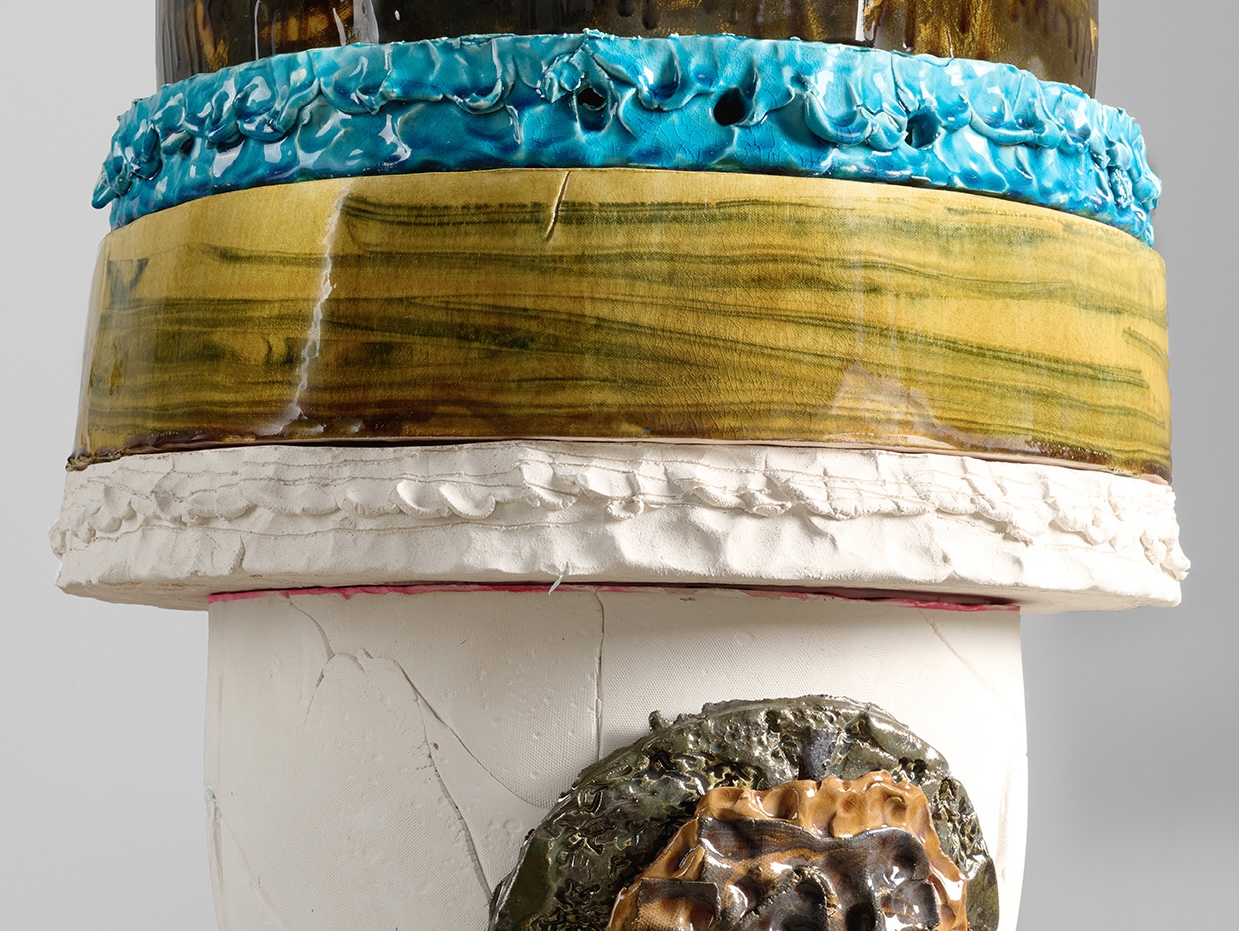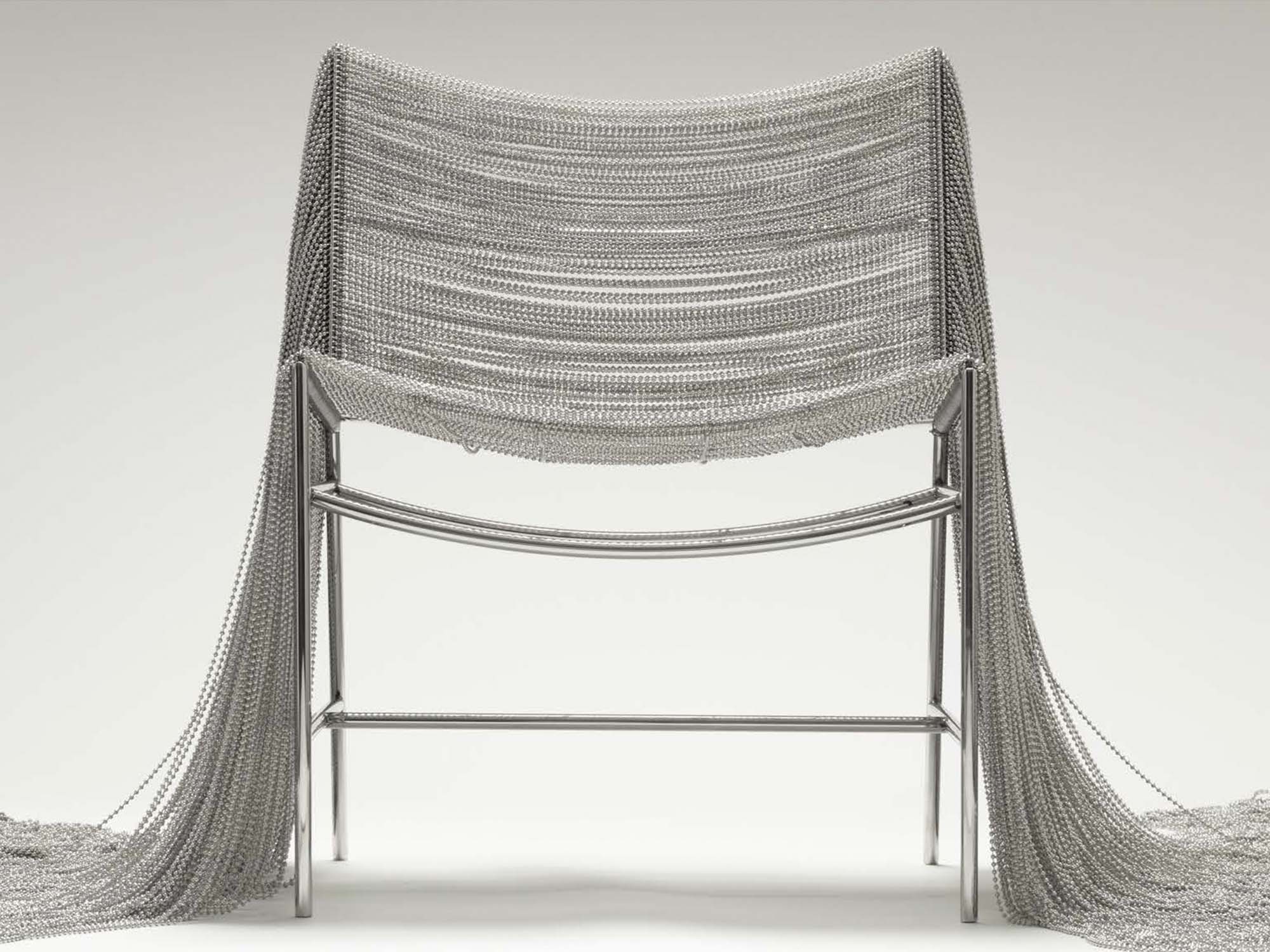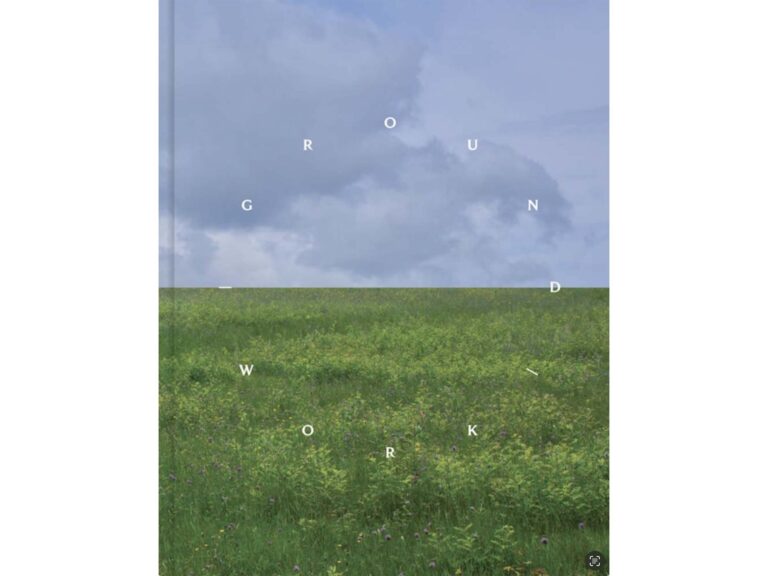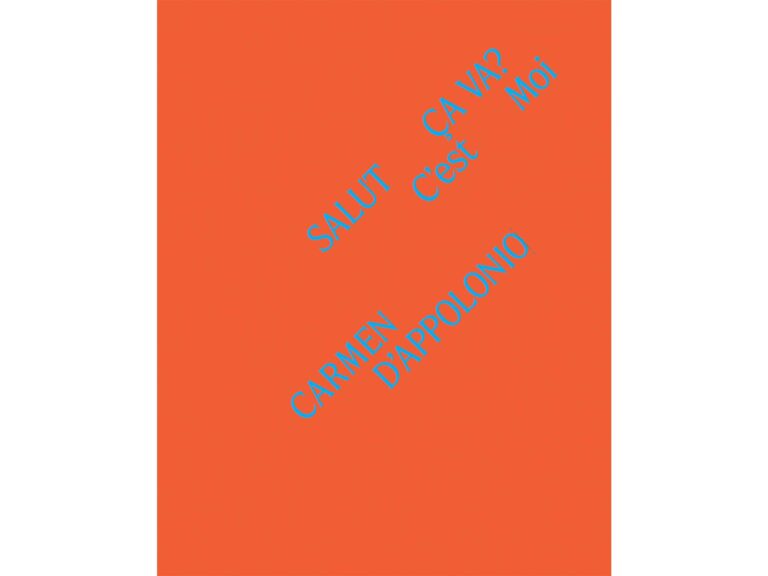By Glenn Adamson
Rain on the West Side Highway, red light at Riverside. So begins a beautiful sonnet by Adrienne Rich, the eighteenth in her cycle of Twenty-One Love Poems. The line floats up for Adam Pendleton as he recalls the times when, as a teenager, and recent convert to the pleasures of art and poetry, he was taken on drives from his family’s home in Virginia up north to Albany, passing the Manhattan skyline on the right. He remembers feeling the tremendous pull of the city, along with the distance that lay between its life and his own – and above all, his desire to bring them together.
Fast forward almost thirty years. Pendleton has arrived, in a big way. This first presentation, at Friedman Benda, is happening only a block from the same West Side Highway he once glimpsed from afar; he is also represented by nearby Pace Gallery, has had a major exhibition at the Museum of Modern Art, and this year, an exhibition at the Hirshhorn Museum down in Washington DC focusing on his contributions to contemporary painting. It is a success story by any standard. Like every story, though, there are many ways to tell it.
Pendleton, for his part, resists any account that amounts to a smooth glide path toward resolution. “I’m now increasingly forced to articulate what I mean,” he has said, “which of course is something that, at turns, I’m not so interested in.” Witness his paintings, with their distilled layering of gesture, fragment, and form and language – a choreography of breakdown, of stuttering, of visual and poetic potential. His voice is inseparable with that all-pervading noise, which, paradoxically, it also cuts right through.
Now Pendleton is making functional objects: tables, mostly, things on which other things may come to rest. They arrive definitively into space. Sharp wedges of timber slice the air. Stone tables either plant themselves firmly, as if sealed to the floor, or else touch down with the delicacy of lunar landers. The creative focus it took to realize these objects is palpable – you feel it in your bones, as much as seeing it with your eyes, but the evidence is there to be seen in the details: the finest of raised edges to the stone tabletops; the joinery of the oak and the profile that the angles etch in space; the perfect curvature of the protruding feet. All this precision targeting is strongly reinforced by the hard-edged Wall Works comprised of a matte black triangle and glossy white triangle applied/painting directly to the walls. Yet there is also, in this remarkably assured exhibition, a prevailing aura of mystery. The forms are possessed by a strange and silent animism, as if they had their own inscrutable reasons for being.
Elegance of this kind does not come easily, and it comes as no surprise to learn that Pendleton has been thinking about these forms for at least a decade. Back in 2016, for example, he created a series of untitled works consisting of alternating circular and rectangular ceramics, low in height, executed in either a white or black glaze and later in a silvery, metallic-like glaze. They suggest pieces on a game board, or perhaps some form of encrypted communication. Indeed, the sculptures were directly inspired by Hannah Weiner’s Code Poems, in which the New York-based writer extrapolated signaling systems like semaphore and Morse Code into unsettling narratives:
LRG Will you carry a light?
MPO Will you make the land tonight?
LRM I will carry a light
GDW I see the land, land in sight
GOV I have just lost sight of the land or light
MQC Anything in sight?
It is easy to see why Pendleton responded to Weiner’s poetry: his work, too, is para-linguistic, running alongside familiar modes of transmission without being reducible to them. And the same can be said for his furniture. These, too, are ciphers, not actually legible, but nonetheless as specific as a typographer’s letterforms.
This duality between clarity and obscurity, or presence and absence, is felt throughout the exhibition. Apart from one small table in white marble, which in this context like a photographic negative, everything is black, that color which is no color and every color. Perfect, ink-dark rounds sit right next to with tables with circular removals from their tops, implying some impossible act of displacement. Other designs stage similar quasi-mathematical correspondences: disc on discs; disc on sphere; prisms and parallelograms, converging at skewed angles. Everywhere there are “geometries of attention,” a phrase that Pendleton often cites, having borrowed it from another poet, Joan Retellack.
Attention: it is imperative that art engage seriously with its politics. At a time when corporations speak unashamedly of owning eyeballs, and even art museums measure success by their social media followings, simply opting out is not an option, or at least, not one with any transformative potential. Instead, Retellack argues for strategies of deflection, disorientation, and determinative silence, “opening up previously inaccessible or unacknowledged or forbidden territory, where the very act of attending entails a figure/ground shift.“
Pendleton manifests this idea in ways both literal and figurative. The diagonals that crisscross the gallery, the echoing circles, the overall contrapuntal phrasing, all do for the rectangular space approximately what John Coltrane did for 4/4 time. Pendleton has created geometries not only of attention, here, but also of intention. Each object is a locus of implied energies, a convergence of unseen vectors, which have coalesced into dense material expression: this thing, right here, right now.
Blackness is crucial to this effect. In canonical art history, it stands for a kind of absolutism: Kazimir Malevich, Barnett Newman, Frank Stella, the usual suspects. But as curator Adrienne Edwards demonstrated in her important exhibition Blackness in Abstraction, held at Pace in 2016, it is possible to understand Blackness as a ground-zero for art while also summoning its expansive cultural associations, treating it “as material, method and mode, insisting on blackness as a multiplicity.”
Pendleton served as the art director for that show, which included one of his aforementioned Code Poem sculptures, alongside works by Glenn Ligon, Lorraine O’Grady, Pope L., and Jack Whitten, among many others. The exhibition was memorably elegiac, as if it were shrouded in silence (mourning being another common association with Blackness). As one reviewer commented at the time, “Since these predominately black works skirted overt messages and images, discerning how they act was an exercise in patience. To take a swift walk through would have been to miss the show.”
This judicious restraint is even more striking in retrospect, given the way that emphatic declarations of racial identity have since taken center stage in the art world, notably in the genre of figurative painting. Blackness in Abstraction offered an alternative model, in which individual agency is not elided with collective representation. For Pendleton, this remains crucial: in his work, the “I” is always in tension with the “we.” His exploration of tables and seating forms is an extension of this strategy, for he is now taking up a class of objects that typically sit to one side of recognized authorship.
In general, people tend not to know who created the functional artifacts in their daily lives. Nor does this seem in any way strange to them – as it would seem strange if they were, say, to come across an unlabeled painting in a museum. Designers, of course, have vigorously contested this presumption of anonymity, and Friedman Benda’s own mission has been to explore design’s conceptual and expressive potential, which is equal to painting, sculpture, or any other discipline. We might even say that acknowledging design agency is an ethical imperative – for otherwise, how can the shapers of our built environment be held to account?
Nonetheless, design authorship remains a specialist interest, and for Pendleton the unattributed and even “generic” status of functional objecthood is an operative ground. He probes this condition in a classically dialectical manner, using geometric shapes that seem to symbolize the universal, even as the extraordinary means by which they are rendered – the exquisite crafting of white oak, marble, and onyx – situate the objects in the particular.
This is a transposition into material terms of Pendleton’s handling of language (for example, the heartbreakingly hopeful phrase “They will love us, all of us, queens,” which appears in a group of paintings inaugurated in his exhibition at MoMA, in a state of disassembly) and of his use of graphic design, as in the sourcebooks that he has assembled over the years. In his new objects, just as in these other, apparently quite different pursuits, Pendleton adopts components that imply universality – a circle, a color, the words “they” and “us” – then breaks them apart, layering the fragments in a dynamically unstable situation. Even the subtlest details of his tables participate in this rescripting. Notice how you yourself appear, as if in a glass darkly, in their polished tops. This is another connection to Pendleton’s previous work, which often features mirroring that “brings to the surface the tension between subjective and objective positions.”
Isamu Noguchi, whose own tables one of Pendleton’s superficially resembles, once said that “art should become as one with its surroundings.” He meant this as a statement about integrated aesthetic environments, thinking for example of the holistic principles of the Japanese garden. Yet contained within this same premise is ongoing change, for surroundings themselves are constantly shifting. If Pendleton’s practice is about any one thing, it is this reality of radical contingency. He is interested in the gesamtkunstwerk (total work of art), that most hallowed of modern design ideas, but he breaks it down into a social form, porous and provocative.
And, finally, poetic. Pendleton’s thoughtful engagement with figures like Rich, Weiner, Retellack, and Amiri Baraka (whose 1964 performance verse “Black Dada Nihilismus” has been an ur-text for him) indicates not just a literary turn of mind, but also a dedication to a certain kind of authorial voice, one that operates through implication rather than assertion; the unsaid speaks volumes. Pendleton does not identify as a designer, pure and simple, because he does not identify with anything pure, or simple. Even so, he is opening up uncharted terrain for design, a space where structure and soul coincide. Pay attention to the intention of these mostly black things, and the white spaces between them, which they so powerfully activate. There is no resolution here, nor is there meant to be. But attention, and intention? You better believe it.









